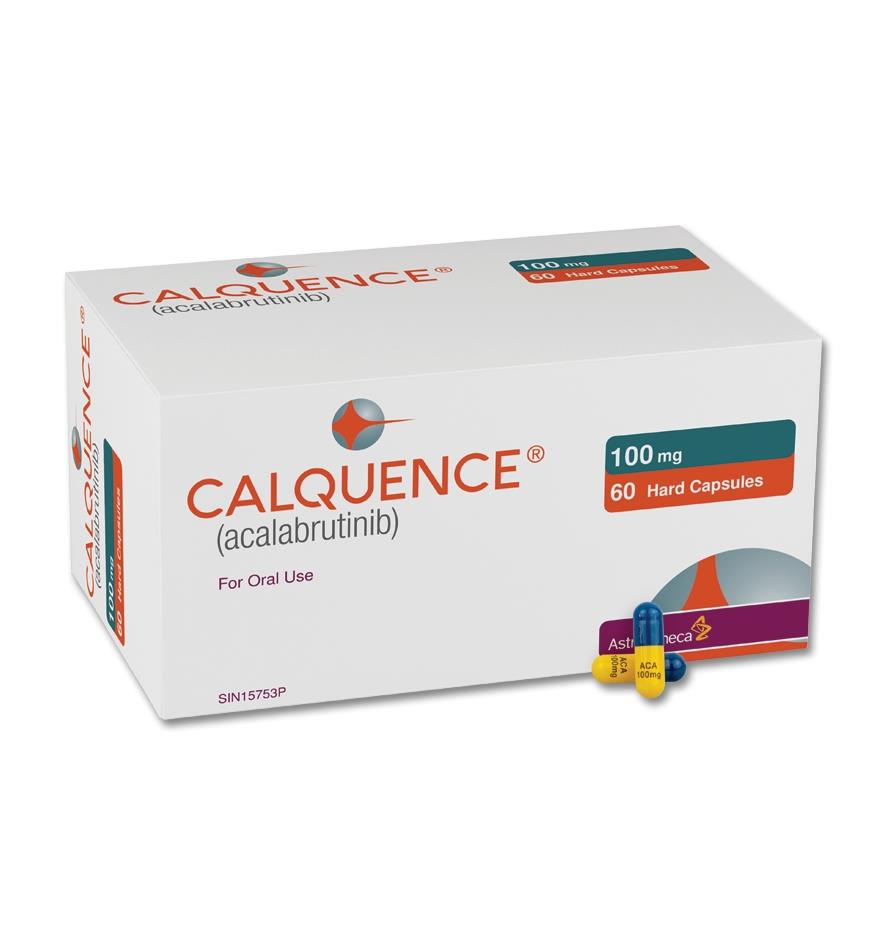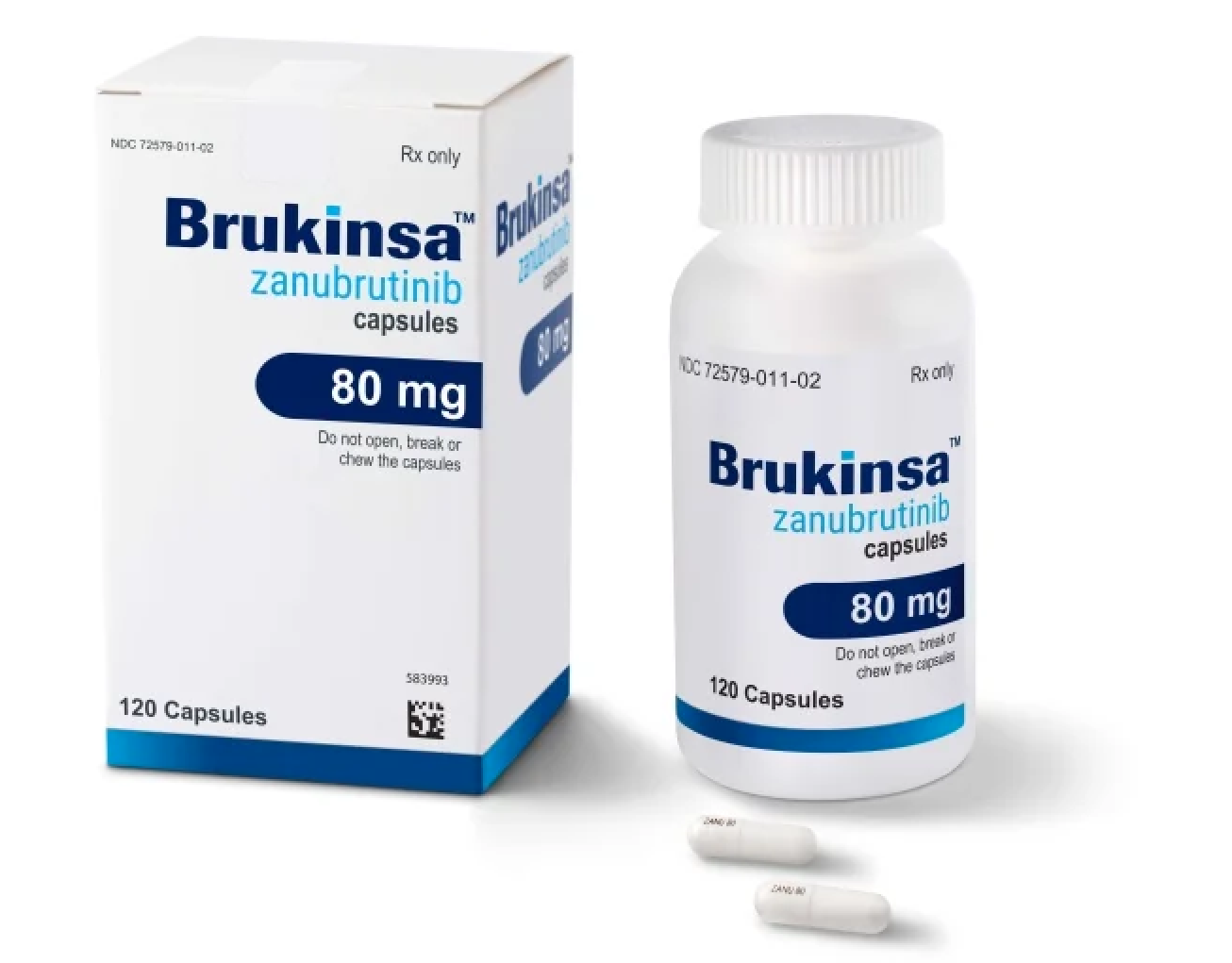Calquence (acalabrutinib) vs Brukinsa (zanubrutinib)
Calquence (acalabrutinib) vs Brukinsa (zanubrutinib)
Calquence (acalabrutinib) and Brukinsa (zanubrutinib) are both Bruton's tyrosine kinase (BTK) inhibitors used to treat certain types of B-cell malignancies, such as mantle cell lymphoma and chronic lymphocytic leukemia. Acalabrutinib is known for its selective inhibition of BTK, potentially resulting in fewer off-target effects, while zanubrutinib has a higher affinity for BTK, which may translate to more potent BTK inhibition but also a higher risk of side effects. When deciding between the two, it is important to consider individual patient factors, including the specific indication, previous treatments, potential drug interactions, and the side effect profile, in consultation with a healthcare provider.
Difference between Calquence and Brukinsa
| Metric | Calquence (acalabrutinib) | Brukinsa (zanubrutinib) |
|---|---|---|
| Generic name | Acalabrutinib | Zanubrutinib |
| Indications | Chronic lymphocytic leukemia (CLL), Small lymphocytic lymphoma (SLL), Mantle cell lymphoma (MCL) | Mantle cell lymphoma (MCL), Waldenström's macroglobulinemia |
| Mechanism of action | Bruton's tyrosine kinase (BTK) inhibitor | Bruton's tyrosine kinase (BTK) inhibitor |
| Brand names | Calquence | Brukinsa |
| Administrative route | Oral | Oral |
| Side effects | Headache, diarrhea, muscle pain, bruising, fatigue, anemia | Decreased neutrophil count, upper respiratory tract infection, decreased platelet count, hemorrhage |
| Contraindications | History of severe bleeding, coagulation disorders | None specifically listed; use caution in patients with bleeding risk or those taking anticoagulants |
| Drug class | BTK inhibitor | BTK inhibitor |
| Manufacturer | AstraZeneca | BeiGene |
Efficacy
Calquence (Acalabrutinib) Efficacy in Lymphoma
Calquence, with the active ingredient acalabrutinib, is a second-generation Bruton's tyrosine kinase (BTK) inhibitor. It has demonstrated efficacy in treating certain types of lymphoma, particularly mantle cell lymphoma (MCL), which is a subtype of non-Hodgkin lymphoma. Clinical trials have shown that acalabrutinib can lead to high response rates in patients with relapsed or refractory MCL. The drug has been approved by regulatory agencies for the treatment of MCL after the failure of at least one prior therapy. Its efficacy is attributed to its ability to inhibit the BTK enzyme, which plays a crucial role in the survival and proliferation of malignant B cells.
While acalabrutinib is not currently approved for other types of lymphoma, ongoing clinical trials are investigating its potential use in various other B-cell malignancies. The drug's selectivity and targeted mechanism of action offer a promising treatment option for patients with B-cell lymphomas, and further research may expand its indications within the lymphoma category.
Brukinsa (Zanubrutinib) Efficacy in Lymphoma
Brukinsa, containing zanubrutinib as its active ingredient, is another next-generation BTK inhibitor with demonstrated efficacy in treating B-cell malignancies. Zanubrutinib has been studied in several types of lymphoma, including MCL, Waldenström's macroglobulinemia (WM), and marginal zone lymphoma (MZL). In clinical trials, zanubrutinib has shown a high overall response rate in patients with relapsed or refractory MCL, leading to its approval for this indication. Additionally, its efficacy in WM and ongoing studies in other lymphoma subtypes suggest a broader therapeutic potential for zanubrutinib in the treatment of B-cell lymphomas.
Compared to the first-generation BTK inhibitors, zanubrutinib is designed to be more selective with a higher affinity for BTK, potentially leading to fewer off-target effects and improved tolerability. This selectivity, combined with its robust anti-tumor activity, makes Brukinsa a valuable addition to the treatment landscape for patients with B-cell lymphomas. As with acalabrutinib, further research and clinical trials will continue to define the role of zanubrutinib in the management of various lymphoma subtypes.
Regulatory Agency Approvals
Calquence
-
European Medical Agency (EMA), European Union

-
Food and Drug Administration (FDA), USA

-
Health Canada

-
Pharmaceuticals and Medical Devices Agency (PMDA), Japan

-
Therapeutic Goods Administration (TGA), Australia

Brukinsa
-
European Medical Agency (EMA), European Union

-
Food and Drug Administration (FDA), USA

Access Calquence or Brukinsa today
If Calquence or Brukinsa are not approved or available in your country (e.g. due to supply issues), you can access them via Everyone.org.
How it works

Make an enquiry
Choose the medicine you want to buy, answer a couple of questions, and upload your prescription to speed things up. We’ll get back to you within 24 hours.


Make an enquiry
Choose the medicine you want to buy, answer a couple of questions, and upload your prescription to speed things up. We’ll get back to you within 24 hours.


Breeze through the paperwork
We'll guide you through the required documents for importing unapproved medicine, ensuring you have all the necessary information.


Get a personalized quote
We’ll prepare a quote for you, including medicine costs and any shipping, administrative, or import fees that may apply.


Receive your medicine
Accept the quote and we’ll handle the rest - sourcing and safely delivering your medicine.

Some text on this page has been automatically generated. Speak to your physician before you start a new treatment or medication.
Let's talk
If you have any questions, call us or send us a message through WhatsApp or email:
Contact us




